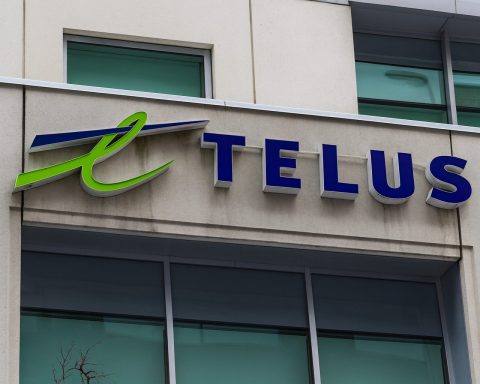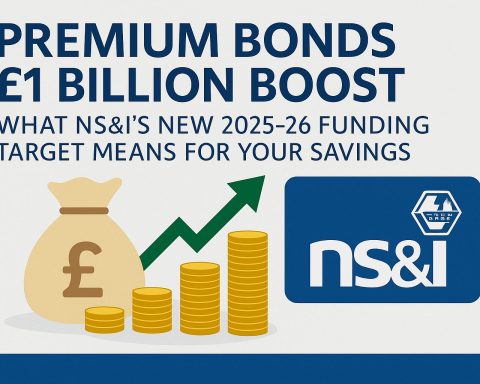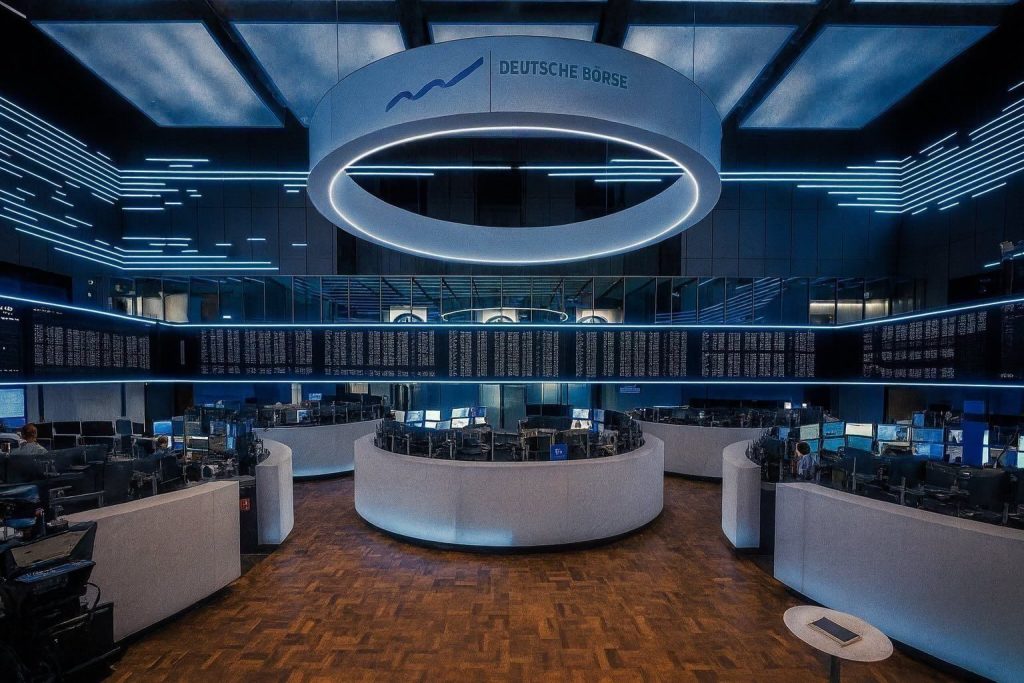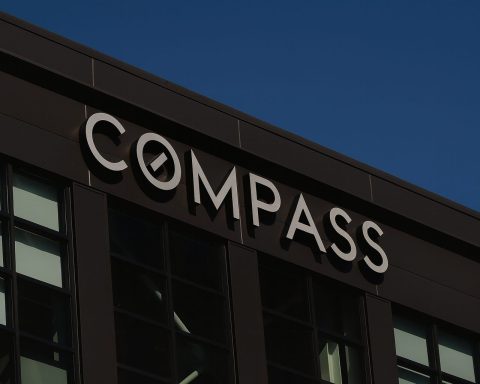The Australian share market finished Friday, 28 November 2025, virtually unchanged, but beneath the calm surface was a big story: banks under pressure, miners in favour, new home‑loan caps from the banking regulator, and a $100‑million travel scandal grabbing headlines.
The benchmark S&P/ASX 200 slipped just 0.04% to close around 8,614.1 points, a tiny fall of 3.2 points. [1]
That still left the index up about 2.3% for the week and roughly 5.6% year‑to‑date, breaking a four‑week losing streak. [2]
However, November itself was ugly: the ASX 200 fell about 3% for the month, its worst November performance since 2014 and the steepest monthly drop in eight months, as richly valued banks finally cracked. [3]
ASX 200 Today: Flat Close After a Strong Week
Trading on Friday was relatively muted, especially with US markets closed for Thanksgiving and global volumes lighter than usual. Mid‑session, the index was actually trading modestly higher — around 8,625 points, up 0.1% — as technology and consumer staples led gains while A‑REITs and financials lagged. [4]
By the close, the ASX 200 had “stumbled” slightly but still locked in a solid weekly gain of about 2.3%, its first positive week in more than a month. [5]
Key index takeaways for Friday 28 November 2025:
- ASX 200: ~8,614.1 (‑0.04% on the day) [6]
- Weekly move: roughly +2.3%, ending a four‑week losing streak [7]
- November move: about ‑3%, the worst November since 2014 [8]
Breadth was actually positive: advancers outnumbered decliners by roughly two to one, with more than 700 stocks higher versus just under 400 lower, highlighting that the slight index loss was mostly about pressure in heavyweight sectors like banks, property and energy. [9]
Banks Drag: Valuation Hangover Meets New Home‑Loan Caps
If November had a villain, it was the banking sector.
- On Friday, the bank index dropped around 0.7%. [10]
- For the month, banks shed about 7–7.5%, marking their worst monthly performance since June 2022. [11]
- Commonwealth Bank of Australia (ASX: CBA) alone fell more than 11% in November, while the other three big four banks lost between roughly 3% and 8%. [12]
Analysts point to stretched valuations, rising costs and intense competition squeezing margins at the major lenders. Softer earnings earlier in the month underlined those pressures and made it harder for investors to justify premium price‑to‑earnings multiples in a still‑uncertain rate environment. [13]
APRA’s New Lending Caps Add to the Caution
Bank sentiment was further clouded by fresh macroprudential measures from the banking regulator APRA, announced late on Wednesday and digested by markets on Thursday and Friday.
- APRA will cap high debt‑to‑income (DTI) home loans — those where total debt exceeds six times household income — at 20% of new lending flows, with the rule applying separately to investor and owner‑occupier loans. [14]
- The cap takes effect on 1 February, and APRA describes it as a pre‑emptive move to head off a build‑up of risky household debt amid a still‑booming property market. [15]
For now, the rule is unlikely to bite immediately — high‑DTI loans currently sit well below the 20% threshold at most banks — but it is another reminder that regulators are watching the housing and credit cycle closely. Several analysts characterised the measure as “more bark than bite” in the short term, but potentially significant if investor lending surges again. [16]
Taken together with stronger‑than‑expected inflation and jobs data, which have pushed markets to price out near‑term RBA cuts and even assign some probability to a rate hike in 2026, the regulatory shift contributed to a rotation away from expensive financials and toward resources and defensives. [17]
Miners, Gold and Lithium Help Prop Up the Index
While banks and property names were under pressure, resources and gold stocks continued to support the market.
- Miners gained about 0.5% on Friday and chalked up a fifth consecutive monthly gain, helped by firmer iron ore and base‑metal prices. [18]
- Gold‑linked miners surged nearly 10% over November, as bullion hovered above US$4,100–4,200 an ounce and extended a multi‑month rally on expectations of US rate cuts in 2026. [19]
- Mid‑session commentary from multiple desks also pointed to critical minerals and lithium stocks “heating up again”, with specialist names among the best performers on the day. [20]
Outside the ASX 200, niche resource plays were in the spotlight:
- European Metals Holdings (ASX: EMH) rallied after news it had secured up to €360 million in grant funding from the Czech government for its Cinovec lithium project, one of Europe’s key strategic battery‑materials assets. [21]
- Papyrus Australia (ASX: PPY) announced a multi‑year, multi‑million‑dollar contract to supply biodegradable mining‑related products, marking a shift from R&D to commercial operations. [22]
These stock‑specific stories fed into a broader narrative: investors are leaning into long‑term decarbonisation and electrification themes, even as they rotate away from rate‑sensitive financials.
Tech and Staples Lead; A‑REITs and Energy Lag
The intraday sector rotation was classic “defensive growth”:
- Information Technology and Consumer Staples were the standout winners, up about 1.4% and 0.9% respectively at midday. [23]
- A‑REITs (real estate) and Financials were the worst performers, down roughly 0.7% and 0.4%. [24]
Key movers included:
- WiseTech Global (ASX: WTC) jumped more than 4% on the day and was repeatedly cited as one of the top index contributors, reinforcing its role as a defensive growth favourite. [25]
- Woolworths (ASX: WOW) rose around 2–3% after JPMorgan upgraded the stock to “overweight” and lifted its price target, arguing that the supermarket giant now offers better value versus domestic peers. [26]
Tech has still had a rough month overall — the sector is on track for its steepest monthly decline since February, driven by volatility in global AI‑linked trades — but in the last week it’s been one of the engines of the rebound. [27]
Top ASX 200 Gainers and Losers Today
Based on official ASX data and multiple market reports, the biggest S&P/ASX 200 moves on Friday were: [28]
Top gainers
- HMC Capital (ASX: HMC) – up about 9% after strong buying interest and ongoing focus on its alternative assets platform.
- Temple & Webster (ASX: TPW) – up roughly 7–8%, extending a strong run as investors rotate back into online retail and homewares.
- Flight Centre (ASX: FLT) – up around 6–7%, as travel names benefited from improving risk appetite despite sector‑specific headlines elsewhere.
- Digico Infrastructure REIT – gained close to 5% on the day.
- WiseTech Global (ASX: WTC) – up about 4.7%, providing a substantial positive contribution to the index.
Top losers
- Eagers Automotive (ASX: APE) – down about 3.7–4.5%, the weakest performer in the index.
- Suncorp Group (ASX: SUN) – fell around 3.5–3.6%, hitting a 52‑week low as investors digested fresh storm‑related claims. [29]
- Centuria Capital (ASX: CNI) – off around 3.5%, reflecting broader pressure across listed property and funds‑management names. [30]
- Qube Holdings (ASX: QUB) – lower by roughly 2.2%, in line with weakness in transport and logistics. [31]
- Premier Investments (ASX: PMV) – down nearly 2%, as parts of the discretionary retail complex stayed on the back foot. [32]
Storm Costs Hit Suncorp and the Insurance Space
One of the more closely watched stories on the day was Suncorp Group (ASX: SUN).
- The insurer updated the market on claims related to severe storms across south‑east Queensland and northern NSW, flagging an estimated $350 million hit from hail and wind damage. [33]
- Major brokers responded by trimming their outlooks: JPMorgan downgraded Suncorp from “overweight” to “neutral” and cut its price target, while others warned that natural hazard costs remain elevated heading into the wet season. [34]
Suncorp’s share price slide to new 52‑week lows underlines how climate‑linked catastrophes remain a key overhang for Australian insurers, even after years of premium increases. Insurer stocks have also been sensitive to bond‑yield moves and to any hint that the RBA might keep rates higher for longer.
Corporate Travel Management Scandal Rocks the Travel Sector
Away from the top‑200 index, the single biggest corporate shock of the day came from Corporate Travel Management (ASX: CTD) — even though its shares remain suspended.
An in‑depth investigation by ABC revealed that: [35]
- The company is embroiled in an overcharging scandal potentially exceeding $100 million, mostly involving UK clients.
- A forensic review by auditors found that revenue recorded for European operations between 2021 and 2024 will need to be substantially restated, with tens of millions of pounds of previously recognised income reversed.
- Corporate Travel has flagged significant refunds to customers but has not yet specified the cash impact; analysts warn that the remediation could have “substantial” balance‑sheet and reputational consequences.
- The head of the group’s UK and European operations has been stood down, and the company does not expect to file FY25 accounts this year, keeping its shares suspended.
While CTM is not currently trading, the scandal is likely to have knock‑on effects for sentiment toward listed travel and service companies, particularly those heavily exposed to government and corporate contracts.
Why November Still Matters for the ASX Outlook
Even with this week’s recovery, investors head into December with a very mixed picture:
- Equities have rallied sharply off recent lows, led by lithium, gold and quality tech names. [36]
- Yet the worst November for the ASX 200 in more than a decade, driven by banks and property stocks, shows how quickly sentiment can flip when valuations are stretched and policy risks re‑emerge. [37]
- Regulators are now clearly in the mix: APRA is tightening home‑loan standards at the margin, and markets are once again debating whether the RBA’s next move in 2026–27 will be up rather than down. [38]
For now, the market narrative is one of rotation, not capitulation: out of expensive banks and interest‑rate‑sensitive property names, and toward miners, gold, selective tech and quality defensives like supermarkets and healthcare.
What Investors Are Watching Next
Heading into December, local and global investors will be focused on:
- Upcoming Australian data on inflation, wages and employment, which will shape expectations for the RBA’s 2026–27 rate path. [39]
- How banks respond to APRA’s new high‑DTI cap, particularly in investor‑heavy segments and among non‑bank lenders that may become more competitive at the margin. [40]
- The durability of the rally in lithium, gold and critical minerals, especially after strong gains this week and fresh government and EU support for strategic projects. [41]
- Ongoing fallout from Corporate Travel Management’s accounting and overcharging scandal, which could influence how investors price risk in complex, contract‑driven business models. [42]
Important note
This article is general news and commentary only. It does not constitute financial product advice or a recommendation to buy or sell any security. Investors should consider their own objectives and consult a licensed financial adviser before making investment decisions.
References
1. m.economictimes.com, 2. m.economictimes.com, 3. m.economictimes.com, 4. www.kapitales.com.au, 5. m.economictimes.com, 6. m.economictimes.com, 7. m.economictimes.com, 8. m.economictimes.com, 9. www.investing.com, 10. m.economictimes.com, 11. m.economictimes.com, 12. m.economictimes.com, 13. m.economictimes.com, 14. www.abc.net.au, 15. www.abc.net.au, 16. www.abc.net.au, 17. www.livemint.com, 18. m.economictimes.com, 19. m.economictimes.com, 20. www.marketindex.com.au, 21. www.sharecafe.com.au, 22. www.sharecafe.com.au, 23. www.kapitales.com.au, 24. www.kapitales.com.au, 25. www.marketindex.com.au, 26. www.kapitales.com.au, 27. m.economictimes.com, 28. m.economictimes.com, 29. www.marketindex.com.au, 30. m.economictimes.com, 31. www.kapitales.com.au, 32. m.economictimes.com, 33. www.marketindex.com.au, 34. www.marketindex.com.au, 35. www.abc.net.au, 36. kalkinemedia.com, 37. m.economictimes.com, 38. www.abc.net.au, 39. www.livemint.com, 40. www.abc.net.au, 41. kalkinemedia.com, 42. www.abc.net.au









